Question
Who among the following sits fourth to the left of
C? Study the following information carefully and answer the questions below: There are nine persons i.e. A, B, C, D, E, F, G, H and I are sitting in a triangular table such that three of them are sitting at the corner of the table and two persons are sitting on each side of the table. Some of them are facing inside the table and some are facing outside the table. Not more than two persons facing the same direction are adjacent to each other. F sits second to the left of H who sits at the corner of the table. Only one person sits between F and C who faces inside the table. D sits at one of the corner of the table but she is not an immediate neighbour of C. I sits third to the left of C. A is an immediate neighbour of H and both are facing the opposite direction to each other. E does not share the side with I and sits second to the left of G who does not sit at the middle of the table. B sits third to the left of I and both are facing the same direction. E faces the same direction as D faces which is opposite to that of F.Solution
F sits second to the left of H who sits at the corner of the table. As per this statement, there are two possible cases and the arrangement will look like this: 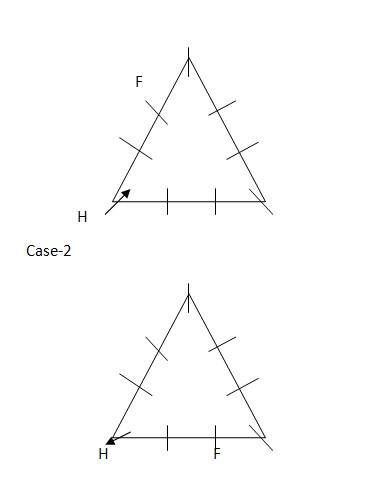 Only one person sits between F and C who faces inside the table.
Only one person sits between F and C who faces inside the table. 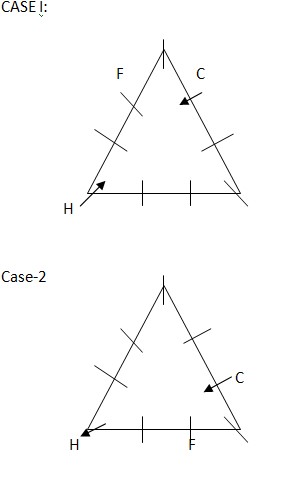 D sits at one of the corner of the table but she is not an immediate neighbour of C.
D sits at one of the corner of the table but she is not an immediate neighbour of C. 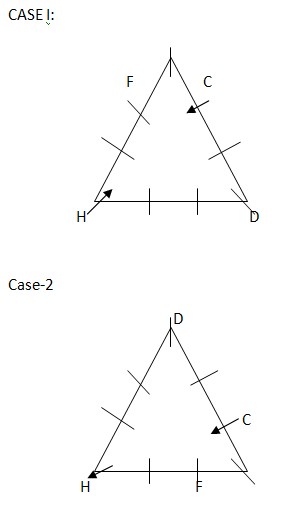 I sits third to the left of C.
I sits third to the left of C. 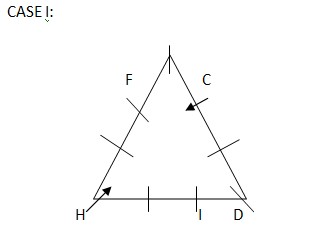 Case-2
Case-2 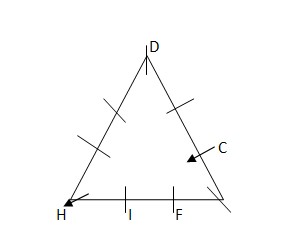 A is an immediate neighbour of H and both are facing the opposite direction to each other. As per this statement, CASE I will further get split into one more case and the arrangement will look like this:
A is an immediate neighbour of H and both are facing the opposite direction to each other. As per this statement, CASE I will further get split into one more case and the arrangement will look like this: 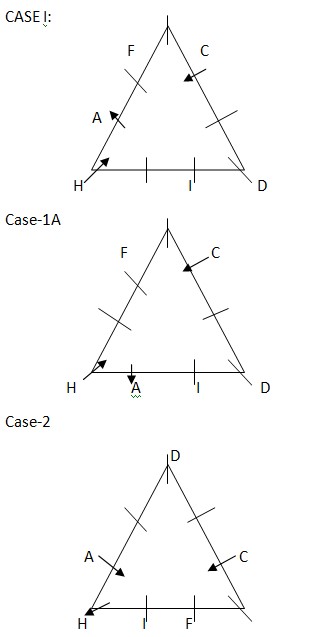 E does not share the side with I and sits second to the left of G who does not sit at the middle of the table. B sits third to the left of I and both are facing the same direction. As per this statement, CASE I and CASE I (A) will get eliminated and we will continue with CASE II and the arrangement will look like this:
E does not share the side with I and sits second to the left of G who does not sit at the middle of the table. B sits third to the left of I and both are facing the same direction. As per this statement, CASE I and CASE I (A) will get eliminated and we will continue with CASE II and the arrangement will look like this: 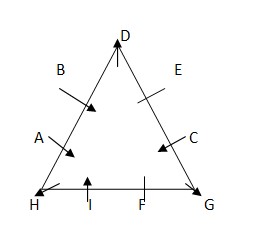 E faces the same direction as D faces which is opposite to that of F. As per this statement, the final arrangement will look like this: CASE II:
E faces the same direction as D faces which is opposite to that of F. As per this statement, the final arrangement will look like this: CASE II: 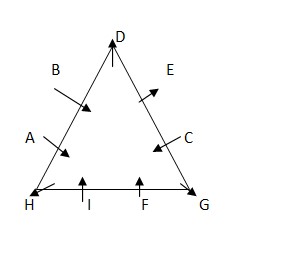
A rectangular piece of copper foil of length 42 cm and area 924 cm2 is folded along its width to form a cylinder such that there is only one ...
The expansion of (3a - 4b - 2c)² is:
With reference to the Tobacco Farming in India, consider the following statements:
1. Tobacco cultivation in India was introduced by the Danes ...
A man deposited Rs. 13000 at 10% compound interest, compounded annually while Rs. 11500 at 13% simple interest per annum. What will be the difference be...
In India, the ‘right to strike’ is:
Which of the following statements is/are related to ecosystem?
(i) It consists of biotic components comprising living organisms.
(ii) All ...
What is the shortcut key to find and replace options in excel ?
Let n (>1) be a composite natural number whose square root is not an integer.
Consider the following statements:
1. n has a factor wh...
Every worker who has worked for 240 days or more in a plantation in a calendar year is entitled to _______.
Which of the following is the general formula of alkenes?
Relevant for Exams:


